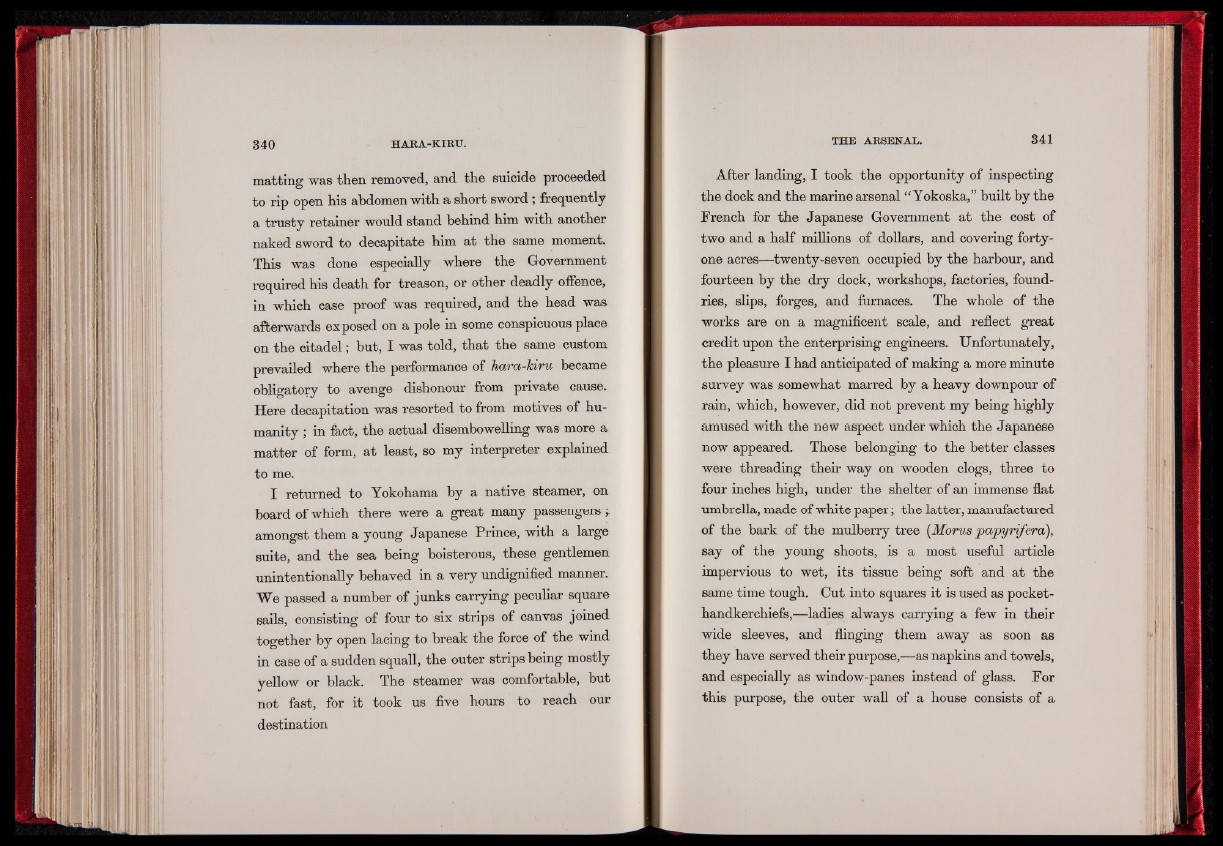
matting was then removed, and the suicide proceeded
to rip open his abdomen with a short sword; frequently
a trusty retainer would stand behind him with another
naked sword to decapitate him at the same moment.
This was done especially where the Government
required his death for treason, or other deadly offence,
in which case proof was required, and the head was
afterwards exposed on a pole in some conspicuous place
on the citadel; but, I was told, that the same custom
prevailed where the performance of hara-Tdru became
obligatory to avenge dishonour from private cause.
Here decapitation was resorted to from motives of humanity
; in fact, the actual disembowelling was more a
matter of form, at least, so my interpreter explained
to me.
I returned to Yokohama by a native steamer, on
board of which there were a great many passengers ;
amongst them a young Japanese Prince, with a large
suite, and the sea being boisterous, these gentlemen
unintentionally behaved in a very undignified manner.
We passed a number of junks carrying peculiar square
sails, consisting of four to six strips of canvas joined
together by open lacing to break the force of the wind
in case of a sudden squall, the outer strips being mostly
yellow or black. The steamer was comfortable, but
not fast, for it took us five hours to reach our
destination
After landing, I took the opportunity of inspecting
the dock and the marine arsenal “ Yokoska,” built by the
French for the Japanese Government at the cost of
two and a half millions of dollars, and covering forty-
one acres—-twenty-seven occupied by the harbour, and
fourteen by the dry dock, workshops, factories, foundries,
slips, forges, and furnaces. The whole of the
works are on a magnificent scale, and reflect great
credit upon the enterprising engineers. Unfortunately,
the pleasure I had anticipated of making a more minute
survey was somewhat marred by a heavy downpour of
rain, which, however, did not prevent my being highly
amused with the new aspect under which the Japanese
now appeared. Those belonging to the better classes
were threading their way on wooden clogs, three to
four inches high, under the shelter of an immense flat
umbrella, made of white paper; the latter, manufactured
of the bark of the mulberry tree (Morus papyrifera),
say of the young shoots, is a most useful article
impervious to wet, its tissue being soft and at the
same time tough. Cut into squares it is used as pocket-
handkerchiefs,—ladies always carrying a few in their
wide sleeves, and flinging them away as soon as
they have served their purpose,—as napkins and towels,
and especially as window-panes instead of glass. For
this purpose, the outer wall of a house consists of a